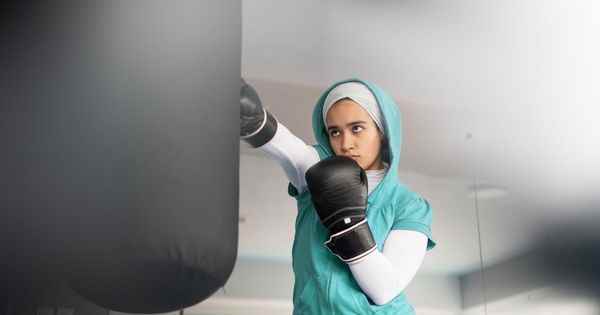Posted on 03/10/2021
3 min read
Fewer competitions, more solo practice and more gym or fitness: women are less likely than men to be registered in a sports club, practice in the gaps of their schedule and less frequently in the working classes .
“The female license is progressing in all the federations”, observes Marie-Françoise Potereau, vice-president of the French Cycling Federation (FFC), which however has only 11.8% of members.
All disciplines combined, the gap is narrowing, but the share of graduates did not yet reach 40% in 2019, according to the National Institute of Youth and Popular Education (Injep).
“The practice of women can be something other than an individual practice, running in the forest, doing yoga at home when you have the time”, explained in January to AFP the Minister for Sports Roxana Maracineanu, former swimming champion, convinced that the clubs’ offer is not “not suitable”.
“Open your schedules!”, launches Marie-Françoise Potereau, also president of the association Femix’Sports, to the address of the clubs which envy the female frequentation of the sports halls.
She cites the example of the triathlon for which some clubs have set up a daycare.
Corollary of this less presence in the club, they scorn competition. According to a 2017 INSEE study, they make three times less than men!
Maintenance activities
Catherine Louveau, professor at the University of Saclay and sociologist of sport, has been studying this question for years and qualifies these differences as “stubborn”: “there are more men in the competition and it’s something that lasts”. Not to mention the breakdown by discipline: “the little girls, it’s dance and gymnastics, and the boys, it’s judo and football”.
So women are “more present in maintenance, fitness and leisure activities”, underlines this researcher, who goes back through history.
“Since the 19th century, she recalls, sport has been a progressive conquest of all disciplines for women”, starting with tennis where “they could keep the dress and sleeves covered”, and the perfect place to … arrange weddings.
“After the wars, sport will be designed to train good mothers, with a good abdominal strap, to carry good future soldiers”, she slips. As for the bicycle, it had the reputation of promoting “onanism and organ descent,” she says.
Today, “women from working-class backgrounds practice much less than female executives”, she also explains.
At the head of the Sports and Gymnastics Federation (FSGT), Emmanuelle Bonnet-Oulaldj counts 40% of women and 60% of men in her multisport federation. “As long as there are social inequalities affecting women first, we will find them in sport, it cannot be otherwise”, she explains to AFP. Besides, “the Covid crisis first impacted female practitioners”, she notes.
Stubborn clichés
For this candidate for the presidency of the French Olympic Committee (CNOSF), also arises “the question of sports equipment, with changing rooms suitable for men and women, lighting, public transport”. In the end, rather than “women’s access to sports practices”, she advocates “equal access to physical and sporting activities”.
Ditto for the competition: “competition is for everyone, it’s part of sport”, she says.
In 2017, INSEE also noted a larger gap among 16-24 year olds, adolescence sometimes being synonymous with stopping sport for young girls. Another crucial period for women: motherhood. Faced with the absence of a recommendation on the physical activity of pregnant women, the Ministry of Sports recently published a guide to sport during maternity.
In the meantime, the clichés remain indeed stubborn.
Women who play sports should stay “real women”, ironically Catherine Louveau, taking the example of athletes, muscular, but who wear jewelry, or varnish their nails, like the sprinter Florence Griffith-Joyner in the 80s.
Likewise, “We would like the front lines of rugby to be dancers and gymnasts, but they also have to be sturdy, muscular, strong!”, she exclaims.
.
dts7
